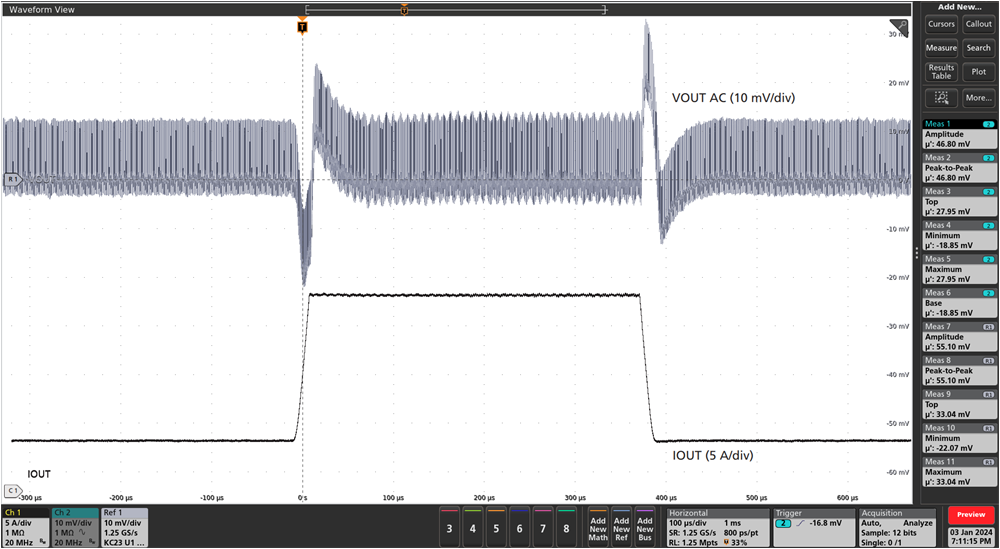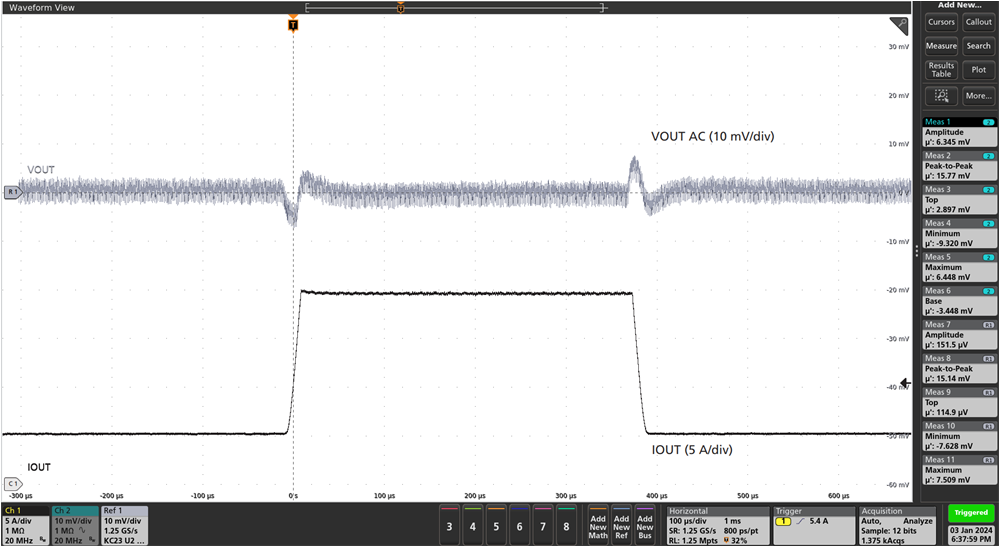SLVUCU8 January 2024
3.4 Load Transient and Loop Response
Figure 3-10 and Figure 3-11 show the response to load transients for both designs. The current step is from 5 A to 20 A and the current step slew rate is 1 A/µs. An electronic load is used to provide a DC 5-A load and the load transient circuit on the EVM is used to provide a 15-A step. The VOUT voltage is measured using TP11 for U1 and TP29 for U2.
Figure 3-12 and Figure 3-13 show the loop characteristics for both designs. Gain and phase plots are shown for VIN voltage of 12 V and a 15-A load.
 Figure 3-10 U1 Transient
Response
Figure 3-10 U1 Transient
Response Figure 3-12 U1 Bode Plot – 15-A Load
Figure 3-12 U1 Bode Plot – 15-A Load Figure 3-11 U2 Transient Response
Figure 3-11 U2 Transient Response Figure 3-13 U2 Bode Plot – 15-A Load
Figure 3-13 U2 Bode Plot – 15-A Load